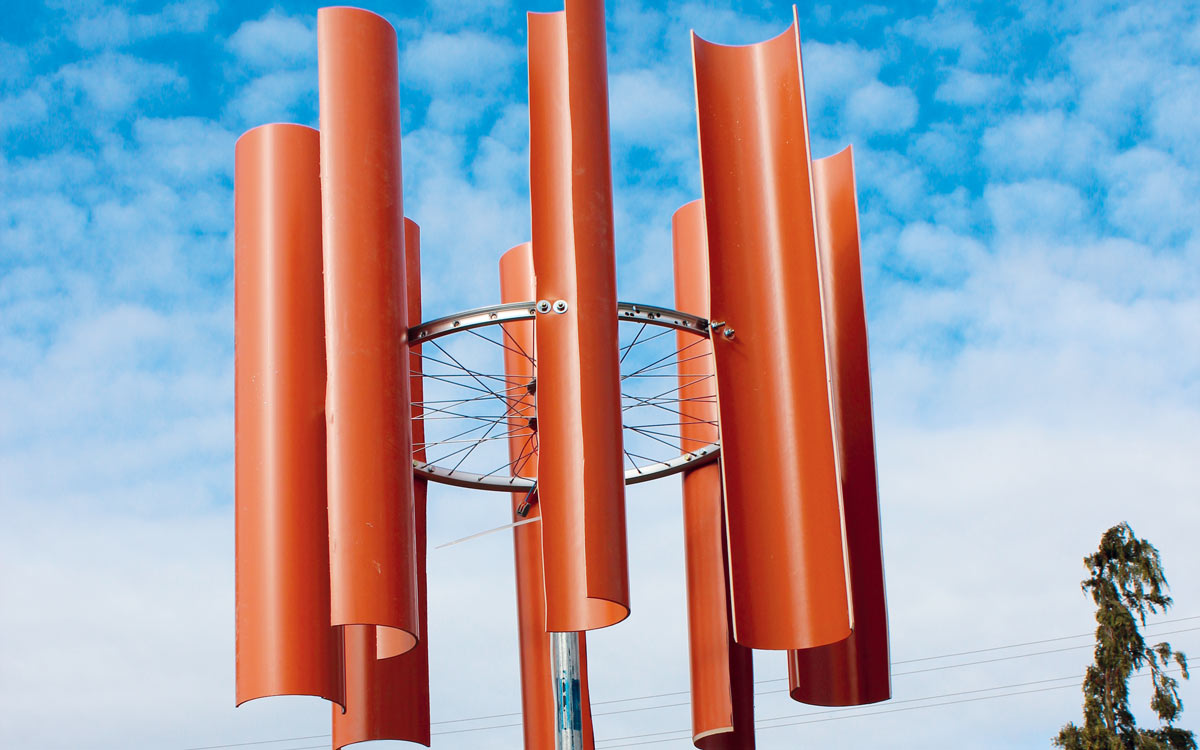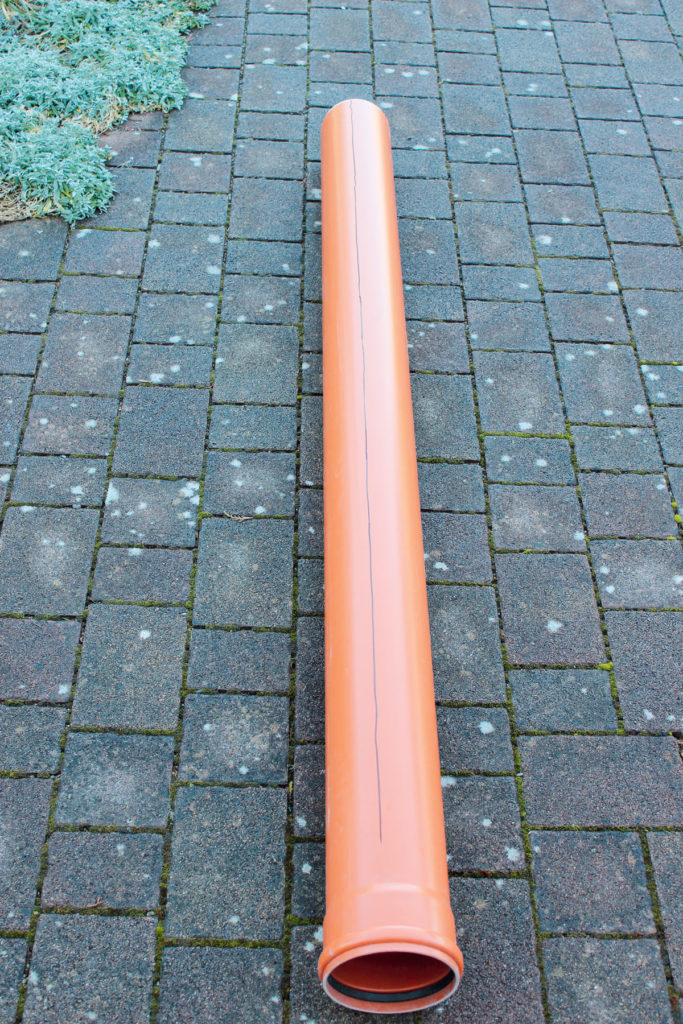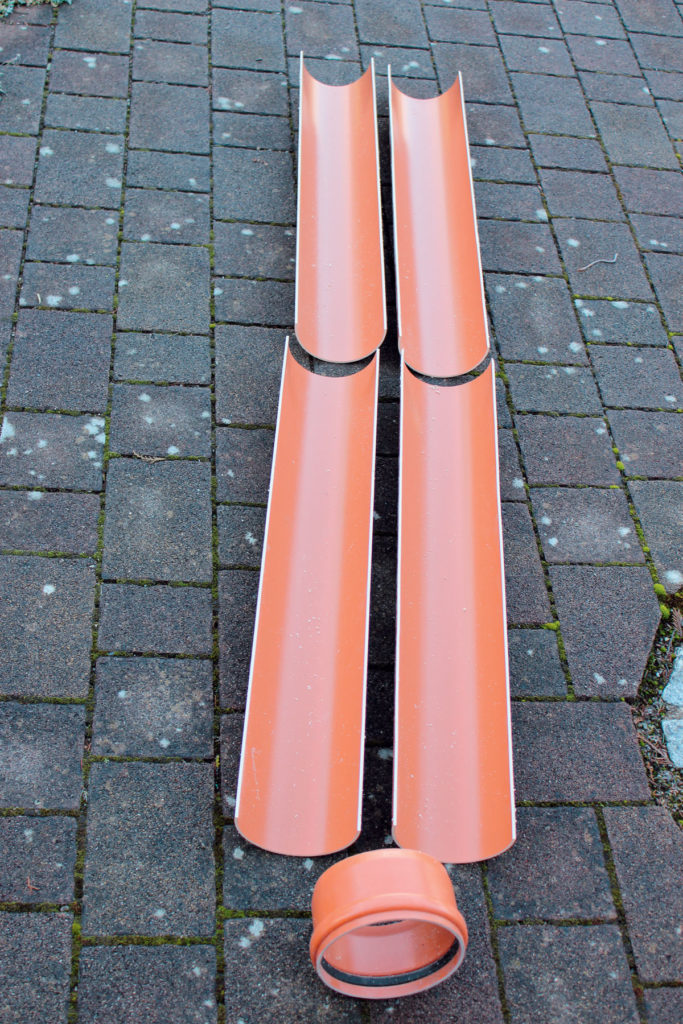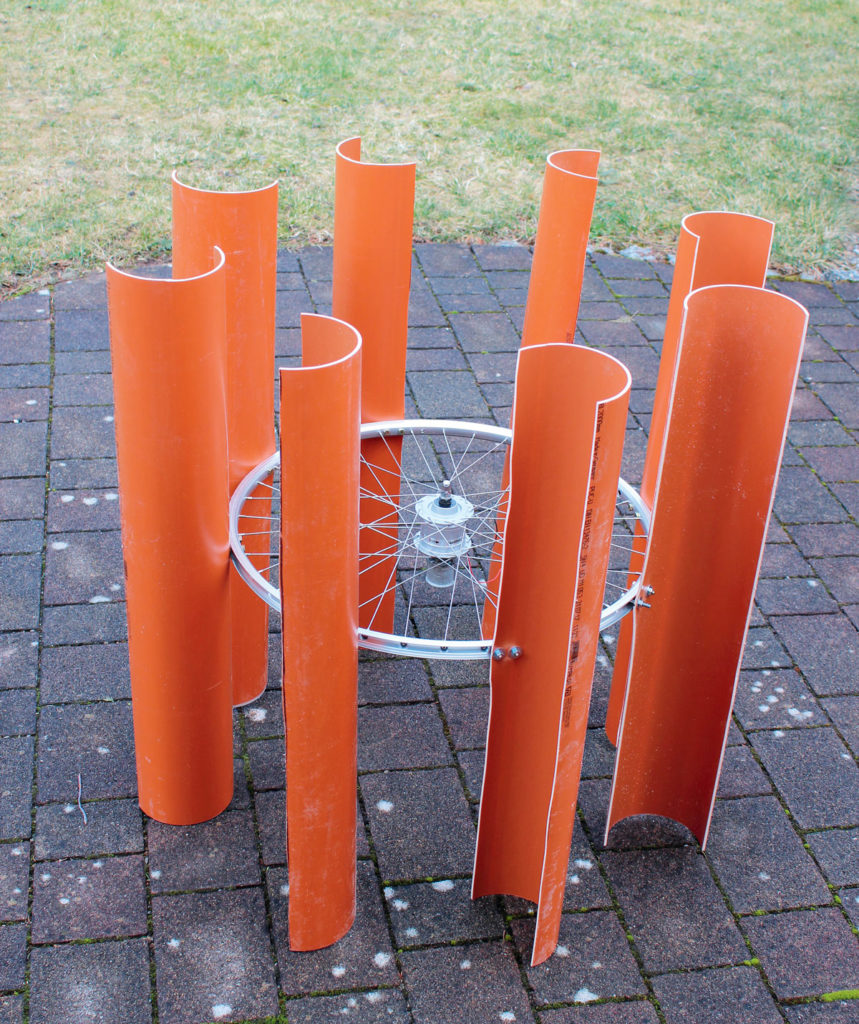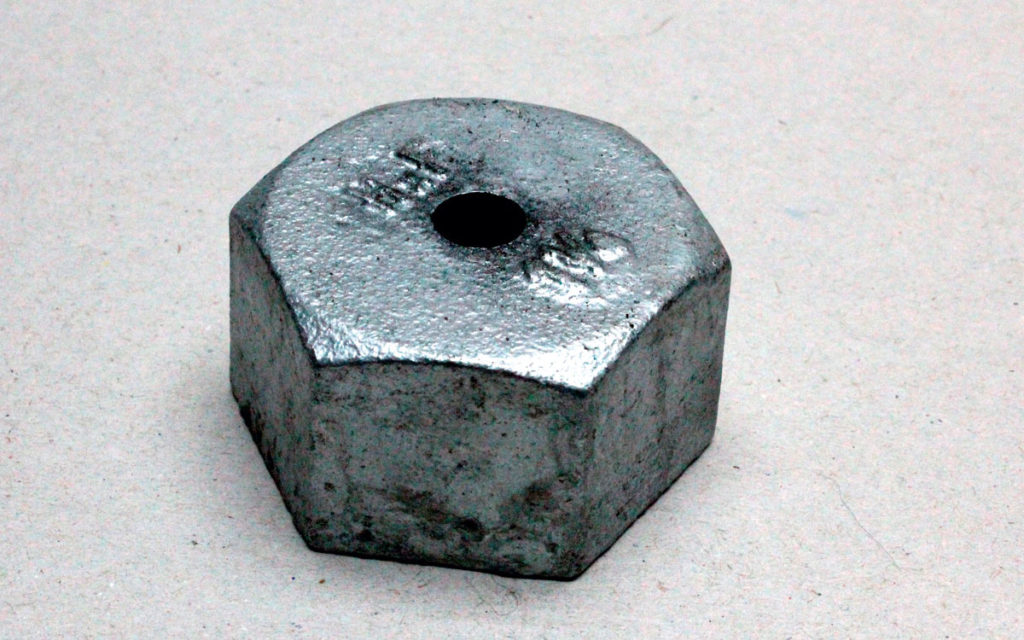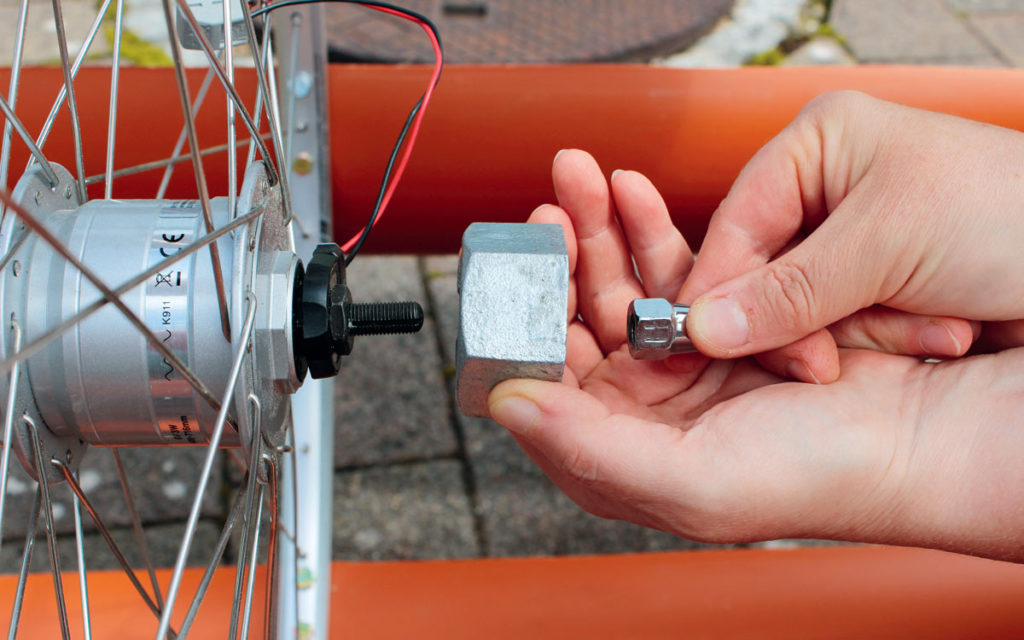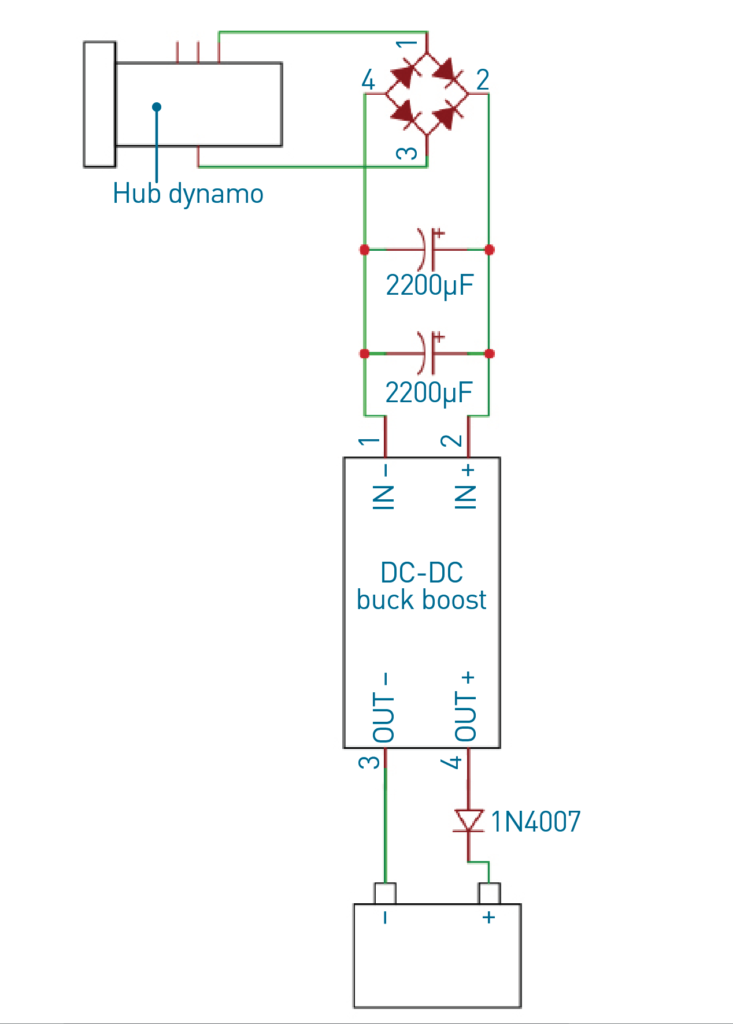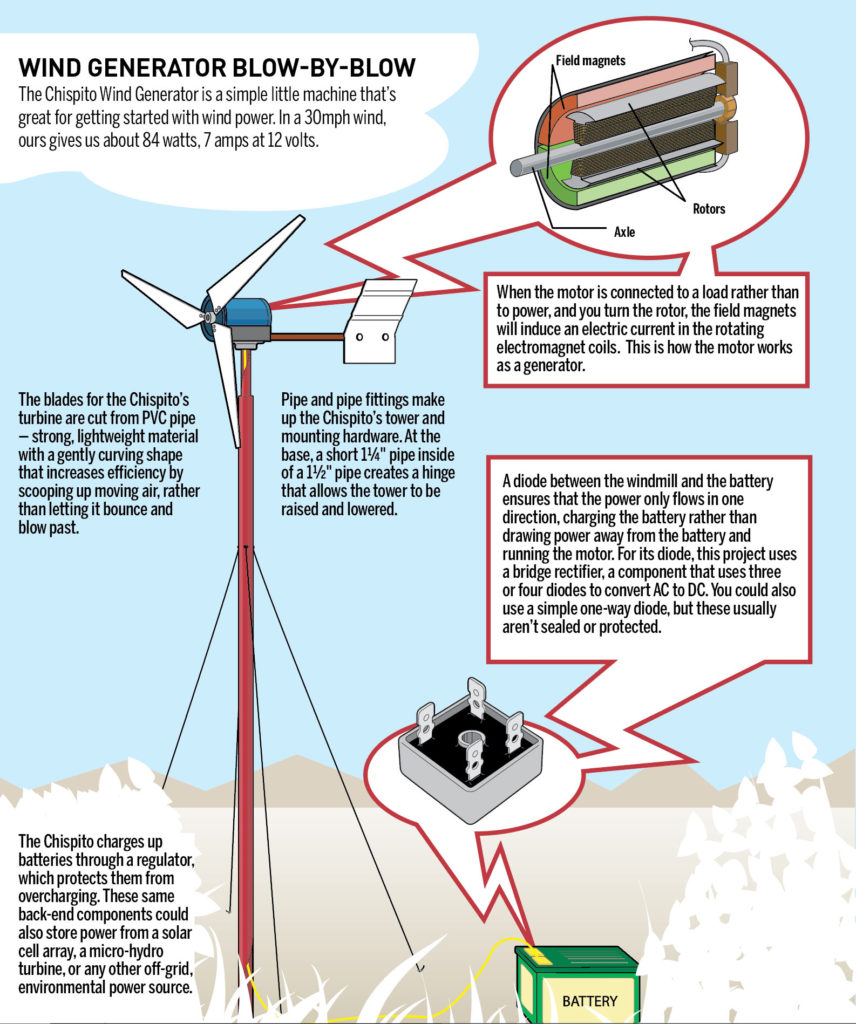Photographed by Ulrich Schmerold. Translated from the original German by Niq Oltman

For low-power applications around your home and yard, professional wind turbine installations are just too pricey. If all you need is a bit of juice for LED illumination or a Raspberry Pi Zero project, paying thousands for a small wind energy system seems disproportionate. And for experiments in school, the cost and time required should be minimal, too — schools are often strapped for cash. In this article, we’ll show you how to build your own small wind-power installation from old bike parts and stuff from the hardware store. With just a little more than a breeze, it can provide about 1 watt of power. That’s enough to charge a small battery, so you’ll still have power when it’s calm.
This small wind turbine is more of an experiment to teach you the basics; it won’t provide you with 100 percent reliable power. No miracles here! Also, please beware of strong winds and storms: this machine is not designed to handle that kind of weather and would likely disintegrate. You must protect it from such potential damage, as flying debris could cause injury.
In contrast to the typical three-blade commercial wind turbines, we use a vertical rotor shaft. This eliminates the need for wind directional tracking and leaves us with a very simple design. Essentially, it’s just a vertically mounted bicycle wheel with a hub dynamo. For rotor blades, we use eight “half-pipes” cut from cheap plastic (PVC) drain pipe, vertically attached to the rim.
Our turbine will start spinning as soon as wind speeds reach about 2 on the Beaufort scale, or 5mph. With a stiff breeze of 20mph or 5 Beaufort (see the conversion table below), it provides around 1W of power output (we measured 147mA at 6.7V).

Build Your Bike Wheel Wind Turbine
Let’s start by building the rotor-and-generator unit. You’ll be using a mast made from a steel water pipe, probably secured in the ground using poured concrete. Check your local requirements for the foundation and the mast height, and adjust accordingly. Depending on local conditions, you may also need to anchor your mast using wire cables.



